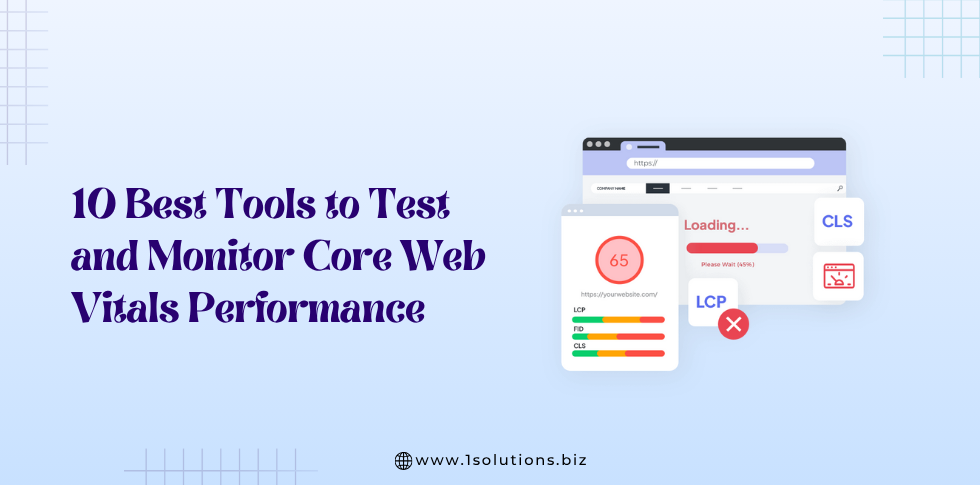In the ever-evolving world of web development and search engine optimization (SEO), metadata plays a pivotal role in helping websites communicate their purpose and content to search engines, users, and various digital tools.
Among the many metadata standards available, Dublin Core Meta Tags stand out as a widely recognized and standardized approach to describing digital resources. But what exactly are Dublin Core Meta Tags, and can they truly boost your SEO?
In this article, we’ll explore the origins, implementation, and potential SEO benefits of Dublin Core Meta Tags.
Whether you’re a webmaster, content creator, or SEO enthusiast, this guide will equip you with the knowledge to decide if Dublin Core Meta Tags are right for your website.
Introduction to Dublin Core
The internet’s rapid growth in the 1990s brought a flood of digital resources—web pages, images, videos, and documents—that needed a consistent way to be described and discovered.
Dublin Core Metadata Initiative (DCMI), is a project born out of a 1995 workshop in Dublin, Ohio, hosted by the Online Computer Library Center (OCLC) and the National Center for Supercomputing Applications (NCSA).
The goal? To create a simple, interoperable metadata standard that could be used across industries and disciplines to describe digital and physical resources.
Dublin Core emerged as a set of 15 core elements, known as Simple Dublin Core, designed to provide a foundational vocabulary for metadata. These elements are:
-
- Title – The name of the resource.
- Creator – The person or entity responsible for creating the resource.
- Subject – Keywords or topics describing the resource.
- Description – A summary or abstract of the content.
- Publisher – The entity making the resource available.
- Contributor – An additional person or entity contributing to the resource.
- Date – A significant date related to the resource (e.g., creation or publication).
- Type – The nature or genre of the resource (e.g., text, image).
- Format – The file format or medium (e.g., HTML, PDF).
- Identifier – A unique reference, like a URL or ISBN.
- Source – A related resource from which this one is derived.
- Language – The language of the content.
- Relation – A reference to a related resource.
- Coverage – The spatial or temporal scope of the resource.
- Rights – Information about rights or licensing.
For more intricate descriptions, Qualified Dublin Core extends these elements with qualifiers (e.g., “Date.Created” or “Subject.Keywords”), but the original 15 remain the bedrock of the standard.
Dublin Core has since become a cornerstone for libraries, museums, universities, and government agencies managing vast digital collections.
Its simplicity and flexibility also make it appealing for web developers looking to enhance their site’s metadata. But how does this translate to the web, and specifically to SEO? Let’s dive into Dublin Core Meta Tags to find out.
What Are Dublin Core Meta Tags?
Dublin Core Meta Tags are the practical application of the Dublin Core standard within the HTML structure of a webpage. Embedded in the <head> section of an HTML document, these tags use the <meta> element to provide structured metadata about the page. Each tag corresponds to a Dublin Core element, prefixed with “DC.” to distinguish it from other meta tags.
Here’s a basic example of how Dublin Core Meta Tags might look in HTML:
<head>
<title>Understanding Dublin Core Meta Tags</title>
<meta name=“DC.Title” content=”Understanding Dublin Core Meta Tags”>
<meta name=“DC.Creator” content=”Jane Smith”>
<meta name=“DC.Subject” content=”Metadata, SEO, Web Development”>
<meta name=“DC.Description” content=”An in-depth look at Dublin Core Meta Tags and their potential impact on SEO.”>
</head>
In this snippet, the tags provide key details about the page—its title, creator, subject, and description—mirroring the purpose of traditional meta tags like <meta name=”description”> but within the Dublin Core framework.
Must Read- What is Organic SEO and Its Benefits?
Why Use Dublin Core Meta Tags?
The primary purpose of these tags is to make resources more discoverable and organized. By embedding structured metadata, you enable search engines, browsers, and other tools (like metadata harvesters) to understand your content more precisely.
This is particularly valuable for websites with diverse or specialized content, such as digital archives or educational platforms.
For a more detailed implementation, consider this expanded example:
<head>
<title>A Guide to Dublin Core</title>
<meta name=“DC.Title” content=”A Guide to Dublin Core”>
<meta name=“DC.Creator” content=”John Doe”>
<meta name=“DC.Subject” content=”Metadata Standards, SEO Optimization, Web Development”>
<meta name=“DC.Description” content=”A comprehensive guide to understanding and implementing Dublin Core Meta Tags for better web visibility.”>
<meta name=“DC.Publisher” content=”1Solutions.biz”>
<meta name=“DC.Date” content=”2025-10-15″>
<meta name=”DC.Type” content=”Text”>
<meta name=”DC.Format” content=”text/html”>
<meta name=”DC.Identifier” content=”https://www.1solutions.biz/blog/dublin-core-guide”>
<meta name=”DC.Language” content=”en”>
<meta name=”DC.Rights” content=”Copyright 2025 1Solutions.biz”>
</head>
This example showcases a broader use of Dublin Core elements, offering a detailed profile of the resource. To see a visual representation, imagine this HTML code as part of a blog post—below is a conceptual image of where these tags reside:
Tip: When beginning with Dublin Core, focus on the essentials—Title, Creator, Subject, and Description. These provide a strong foundation without overwhelming you with complexity.
Dublin Core and SEO: The Benefits
SEO is the art and science of optimizing your website to rank higher on search engine results pages (SERPs). Metadata, including meta titles and descriptions, plays a significant role in this process by helping search engines understand and index your content. So, where do Dublin Core Meta Tags fit in?
Do Search Engines Use Dublin Core Directly?
To answer this, let’s consult the experts. According to Google’s documentation on supported meta tags, the search giant recognizes specific meta tags like <title>, <meta name=”description”>, and <meta name=”robots”>.
Dublin Core isn’t explicitly listed among them. Similarly, Bing’s Webmaster Guidelines focus on standard meta tags without mentioning Dublin Core.
However, there’s a caveat: Google does support Dublin Core for specific applications, such as indexing academic content in Google Scholar. For scholarly articles, tags like DC.Title and DC.Creator can help Google Scholar accurately catalog and display research papers. But for general websites—blogs, e-commerce sites, or portfolios—the evidence of direct SEO impact is thin.
Must Read- 10 Essential SEO Techniques for E-commerce Websites
Indirect Benefits for SEO
While Dublin Core may not directly influence Google’s or Bing’s ranking algorithms, it can still contribute to SEO in several indirect ways:
- Enhanced Content Understanding
Structured metadata provides additional context about your page. Even if search engines don’t prioritize Dublin Core, they might still parse this data, improving their comprehension of your content’s purpose and relevance. - Specialized Search Platforms
For websites in niches like academia, libraries, or cultural heritage, Dublin Core is a standard recognized by specialized search engines and aggregators. For example, a digital library using Dublin Core could be harvested by tools like OAI-PMH (Open Archives Initiative Protocol for Metadata Harvesting), increasing its visibility and driving traffic. - CMS and Internal Benefits
Some content management systems (e.g., WordPress, Drupal) use Dublin Core metadata internally to organize content or enhance user experience. A well-structured site can improve crawlability and user engagement—both SEO factors. - Complementary Metadata Strategy
Dublin Core can work alongside other standards like Schema.org, which is widely supported by search engines for rich snippets (e.g., star ratings, event dates). Combining these approaches creates a robust metadata profile.
Use Case Example: Academic Website
Imagine a university website publishing research papers. By adding Dublin Core Meta Tags like this:
<meta name=”DC.Title” content=”The Impact of Metadata on Digital Discovery”>
<meta name=”DC.Creator” content=”Dr. Emily Carter”>
<meta name=”DC.Subject” content=”Metadata, Information Science”>
<meta name=”DC.Date” content=”2025-09-01″>
The site becomes more discoverable on platforms like Google Scholar or institutional repositories, potentially increasing citations and backlinks—key SEO signals.
For more on how metadata influences SEO, check out Best SEO Practices For Your Website
How to Implement Dublin Core Meta Tags
Adding Dublin Core Meta Tags to your website is straightforward. Here’s a step-by-step guide:
Step 1: Choose Relevant Elements
Select the Dublin Core elements that best describe your content. At a minimum, include:
- DC.Title
- DC.Creator
- DC.Subject
- DC.Description
For more detail, add elements like DC.Publisher, DC.Date, or DC.Identifier.
Step 2: Craft Accurate Content
Write precise, relevant values for each tag. For example:
- DC.Title: “How To Boost Your SEO Efforts with Page Content Analysis”
- DC.Subject: “SEO, Digital Marketing, Web Optimization”
Step 3: Add Tags to HTML
Insert the <meta> tags in your <head> section. Here’s a sample:
<head>
<title>How To Boost Your SEO Efforts with Page Content Analysis</title>
<meta name=”DC.Title” content=”How To Boost Your SEO Efforts with Page Content Analysis”>
<meta name=”DC.Creator” content=”Shweta”>
<meta name=”DC.Subject” content=”SEO, Digital Marketing, Web Optimization”>
<meta name=”DC.Description” content=”Discover how page content analysis can help to boost your website in 2025.”>
<meta name=”DC.Publisher” content=”1Solutions.biz”>
<meta name=”DC.Date” content=”2025-10-20″>
</head>
Step 4: Use Tools or Plugins
If you’re on a CMS like WordPress, plugins like “Dublin Core Metadata” can simplify the process. Alternatively, manually edit your theme’s header file.
Step 5: Validate Your Code
Run your HTML through the W3C Markup Validation Service to ensure proper formatting.
Here’s what a validated page might look like in a browser’s developer tools:
Tip : Use the same format and style for Dublin Core tags across all pages (e.g., ISO date format: YYYY-MM-DD) to maintain uniformity.
Must Read- 12 SEO Audit Tools to Use for Website Analysis & Optimization
Tips for Using Dublin Core Effectively
To maximize the value of Dublin Core Meta Tags, consider these practical tips:
- Be Specific with Subjects
Include multiple, relevant keywords in DC.Subject (e.g., “SEO, Metadata, Web Design”) to improve categorization. - Update Regularly
If your content changes, revise your meta tags to reflect the latest information. - Leverage for Niche Audiences
If your site serves academia or libraries, prioritize Dublin Core to align with their standards. - Avoid Overcomplication
Don’t use every element unless necessary—focus on what adds value. - Monitor Impact
Use tools like Google Analytics to track traffic and see if metadata improvements correlate with better performance.
Conclusion
Dublin Core Meta Tags offer a standardized, flexible way to describe your web resources, rooted in a history of enhancing digital discoverability. While they may not directly boost your SEO rankings on major search engines like Google or Bing, their indirect benefits—improved content understanding, niche visibility, and compatibility with broader metadata strategies—make them a valuable tool for certain websites.
For general blogs or businesses, Dublin Core might be an optional enhancement, but for academic sites, libraries, or archives, it’s a game-changer. Pair it with services from 1Solutions.biz, such as their SEO optimization services, to create a holistic approach to online visibility.
Ultimately, SEO success hinges on a mix of high-quality content, technical optimization, and strategic metadata use. Dublin Core Meta Tags can be part of that mix, especially if you’re aiming to stand out in a metadata-driven ecosystem. Explore this standard, test its impact, and see how it fits into your digital strategy.






























 in India
in India